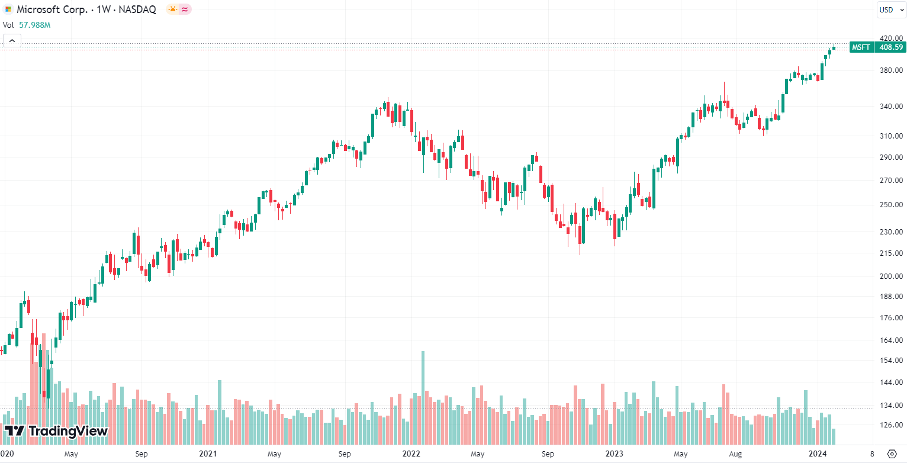AI Initiative and the Impact on the Stock
Microsoft has invested heavily in AI over the past year, partnering with OpenAI to create Chatbots that it has integrated into its flagship products. However, this has increased the company's operating costs, which may be why its shares fell 1% after the market closed. * This decline highlights how sensitive the market is to any news of cost increases, even when they are linked to innovations that can deliver future growth.

The stock performance of Microsoft Corp. over 5 years. Source: tradingview.com
Market Environment Analysis
Even though the AI-industry has suffered a $190 billion loss in market capitalization, Microsoft appears to be on track to leverage AI to fuel its growth. The company has started selling AI assistant Copilot, which can boost the company's commercial revenue, and the 17% revenue growth in the commercial part of Office software is also encouraging.
Personal Outlook and Strategies
The situation at Microsoft leads me to think about the long-term outlook of my investment strategy. While short-term stock declines may be worrisome, we need to consider the potential of AI and its impact on the company's future products and services. It's important to watch how Microsoft handles increased costs and whether it will be able to sustain growth in areas like Azure and Office.
Conclusion
Today's information on Microsoft is a double-edged sword for me as an investor. On the one hand, there is the significant investment in AI and the potential benefits from that, but on the other hand, there is the risk associated with rising costs and their impact on the company's overall financial stability. It will be key to see how Microsoft adapts to these challenges and how this affects its long-term growth and market position. For me as an investor, this means that I need to be prepared to react flexibly as the situation evolves and adapt my strategy as new information emerges. [1]
* Past performance is no guarantee of future results.
[1] Forward-looking statements are based on assumptions and current expectations, which may be inaccurate, or on the current economic environment, which may change. Such statements are not guarantees of future performance. They involve risks and other uncertainties that are difficult to predict. Results may differ materially from those expressed or implied by any forward-looking statements.








